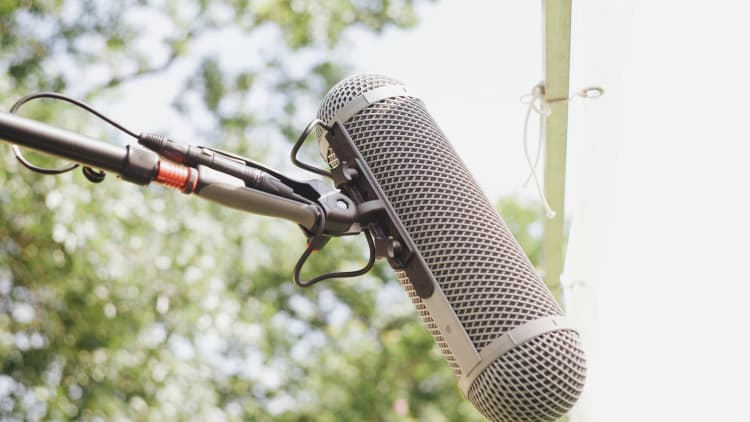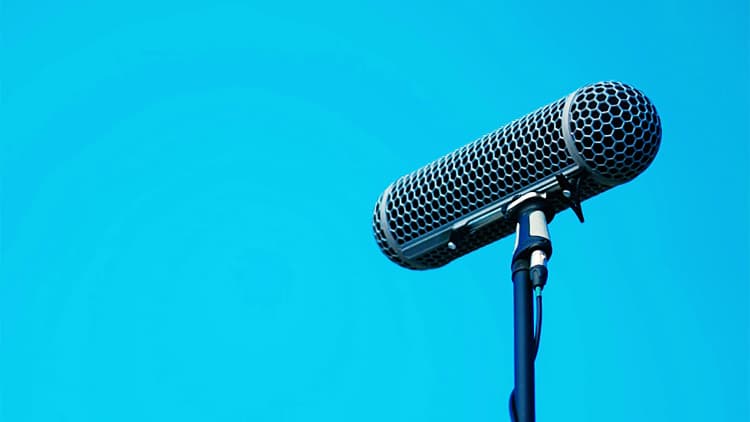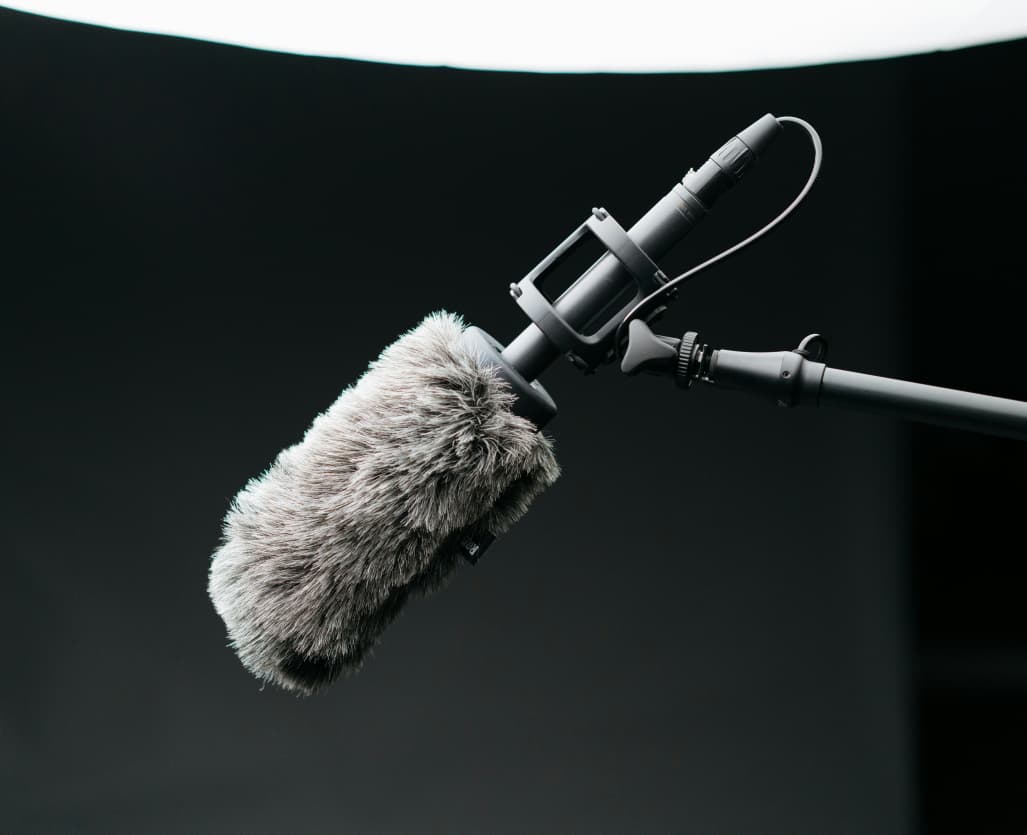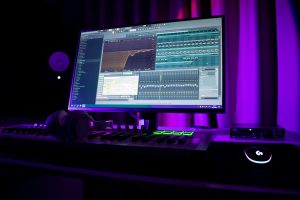The quality of recorded audio is equally important to video production quality. The quality of your audio will destroy any visually appealing scenes when you use a poor microphone during production. A boom mic serves as the solution for sound recording needs. Boom microphones function as essential sound capture devices that deliver isolated distant audio, thus serving professionals across filmmaking, vlogging, and podcasting fields.
In this article, we are going to provide you with details about boom microphones and their distinction from shotgun mics, while providing detailed usage instructions and discussing audio enhancement possibilities through Tempolor.
What is a Boom Microphone?
The boom microphone functions as a microphone attached to a flexible, elongated pole, which professionals refer to as a boom pole. The key function of a boom microphone consists of recording clear audio from subjects while keeping the microphone out of camera view. The technique of boom miking appears in both filming and interviews, and live broadcasts.
The boom operator-yes, sometimes a separate job-holds the pole either above or below the subject, skillfully keeping the mic close to the sound source while avoiding the camera frame. The microphone itself is usually highly directional, placed in front of whatever is being recorded and filters out background noise so that the voice of the actor can be clearly heard. Boom microphones are advantageous to shooting in a more active sense when things are moving around, or in turn,
Boom Mic vs Shotgun Mic: What’s the Difference?
People often confuse boom microphones with shotgun microphones, but they serve slightly different purposes:
- Boom Mic refers to the entire setup: the pole + microphone + shock mount + windscreen. It’s about the mobility and positioning of the mic.
- Shotgun Mic describes the specific type of microphone used in a boom setup. It’s called a “shotgun” mic because of its narrow, focused pickup pattern (often super cardioid or hypercardioid), meaning it captures sound mostly from one direction and rejects sounds from the sides and rear.
In short:
- The shotgun mic is a highly directional microphone often mounted on a boom pole.
- The boom mic is the practical application of using a mic mounted on a boom pole.
Not all boom mics use shotgun microphones, but shotgun mics are the most popular choice due to their ability to zero in on a target sound source while filtering out background noise.
How Do You Use a Boom Mic?

Though using the boom mic might look easy, the sound that comes out in the professional standard depends not just on techniques but also on the attention to minute details.
Mic Setup
Start from the very beginning by setting up your gear properly. A lightweight boom pole of a certain length would do (preferably carbon fiber for easy handling). A shock mount would get fitted at the end of that long pole, which would secure the microphone in it while absorbing any kind of handling noise. The microphone typically used is a shotgun, which is selected for its highly directional pickup.
Attach the Mixer:
Attach the microphone to the recording device or mixer using an XLR cable while running that cable cleanly along the boom pole and firmly secured with clips or Velcro ties in order to minimize rattling noise.
Avoid wind disturbance:
The microphone is to be windscreen-windshields, consisting of a simple foam cover for indoor recording or “dead cats” for outside settings need to be used in order to avoid any wind disturbances that might affect the audio. A good setup guarantees that you have a clean, professional recording right from the get-go.
Positioning the boom pole correctly is key to capturing clear audio without disrupting the shot. There are two main techniques:
- Overhead booming, where the mic is held above the subject and angled downward.
- Underhand booming, where it’s held below and angled upward.
Overhead booming is usually preferred to avoid floor noise, but underhand booming works better in low-ceiling spaces or when overhead shots are blocked. In both cases, keep the microphone as close as possible—ideally 18 to 24 inches from the subject—while staying out of the camera frame.
Keeping the microphone invisible is crucial. Always use a field monitor to check framing, communicate closely with the camera crew, and mark limits on the boom pole with gaffer tape to avoid dipping into the shot. The goal is to stay close to the sound source without being seen.
Proper booming technique also matters. Move smoothly and quietly, maintain steady arm strength to prevent drooping, and follow the action to keep consistent audio quality. Always monitor the sound through headphones to catch issues like handling noise or environmental interference. With practice, a good boom operator stays agile, silent, and completely unnoticed.

Enhancing Audio with Tempolor
The process of achieving excellent audio during production represents just fifty percent of the entire challenge. Your final product requires audio refinement as well as new audio components such as background music and soundscapes.
This is where Tempolor comes in. Tempolor offers an array of powerful tools that can take your audio to the next level:
- AI Music Generator: Need custom background music that perfectly matches the mood of your scene? Tempolor’s AI Music Generator creates unique tracks tailored to your project, ensuring you never worry about licensing issues.
- Royalty Free Music Download: Find high-quality, ready-to-use tracks without legal headaches. Whether you need upbeat pop, suspenseful ambient tones, or serene acoustic melodies, Tempolor has an extensive library for you.
- AI Music Creation: Dive deeper into crafting your own soundtracks, blending different genres, moods, and instruments with Tempolor’s user-friendly AI tools.
By using professional audio sources alongside your boom mic recordings, you ensure your video content feels polished, cinematic, and truly professional.
Conclusion
The boom mic setup functions as a piece of essential equipment for filmmakers and content creators, and audio engineers. The proper assembly of equipment, combined with microphone placement and keeping yourself out of the frame, and developing solid recording techniques, will produce the best possible sound quality.
Your audio problems will still exist despite perfecting your boom mic techniques, but adding Tempolor’s AI music generation and royalty-free downloads will enhance your result.
Learning to operate the boom mic effectively stands as one of the most valuable abilities for anyone making amateur or professional videos. Through practice, along with appropriate post-production tools, you will maintain absolute audio clarity for your audience.
Learn more:What is ASMR and Why Should You Use It in Your Content?






